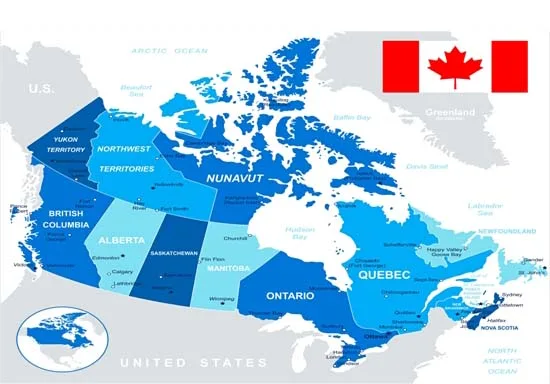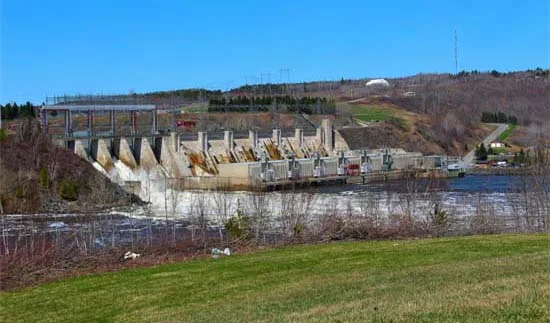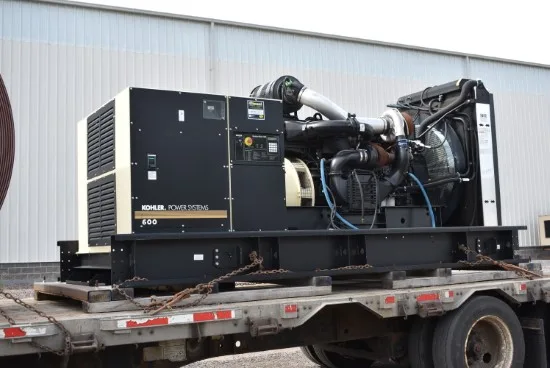Overview of the Canadian Power Grid
The Canadian power grid consists of three primary systems: the Western grid, the Eastern grid, and the Quebec grid (including Atlantic Canada). These grids are structured in a north-south configuration to facilitate electricity exports to the United States. Canada’s provinces are responsible for generating their own electricity, with each province having distinct methods and suppliers. Below is a summary of power generation by province:

- Alberta: Powered by fossil fuels (coal and natural gas) through TransAlta, ENMAX, and Capital Power Corporation.
- British Columbia: BC Hydro generates electricity primarily through hydroelectric dams on rivers such as the Columbia and Kootenay.
- Manitoba: Manitoba Hydro utilizes hydroelectric dams on rivers including the Nelson, Saskatchewan, Laurie, and Winnipeg.
- New Brunswick: Features a mix of fossil fuels, hydroelectric, and nuclear power generation.
- Newfoundland and Labrador: Newfoundland and Labrador Hydro relies on hydroelectric generation, supplemented by the Holyrood Thermal Generating Station.
- Nova Scotia: Nova Scotia Power uses thermal power plants fueled by coal, petroleum coke, fuel oil, and natural gas.
- Ontario: A diverse energy mix includes nuclear, hydroelectric, natural gas, wind, solar, and biomass power.
- Prince Edward Island: Imports most electricity from New Brunswick, with Maritime Electric and Fortis operating emergency diesel plants.
- Quebec: Hydro-Quebec generates one-third of Canada’s electricity through hydroelectric plants.
- Saskatchewan: SaskPower provides power primarily through coal-fired plants.
- Yukon: Yukon Energy Corporation generates power using hydroelectric plants, supplemented by wind turbines and diesel generators.
- Northwest Territories: Electricity is generated through diesel plants and is not connected to the U.S. grid.
- Nunavut: Power is supplied by Quilag Energy Corporation’s 27 diesel-powered generators.
Canada’s integration with the U.S. power grid includes over 35 electrical transmission interconnections. This partnership allows Canada to export electricity to regions such as New England, New York, California, the Upper Midwest, and the Pacific Northwest. More information on these interconnections can be found through the Canadian Electricity Association.

Methods of Power Generation
Canada is a global leader in clean energy, with hydro, wind, solar, and biomass accounting for more than 65% of the country’s total electricity generation as of 2015. The gradual replacement of coal-based power plants with natural gas and renewable energy sources is a priority across all jurisdictions.
Electricity production involves a prime mover turning an alternator or generator:
- Natural Gas Plants: Use gas turbines to spin the generator.
- Diesel Plants: Use diesel engines to spin the generator.
- Hydroelectric Plants: Use water flow to turn turbines.
- Coal and Biomass Plants: Use fuel to heat water in boilers, producing super-heated steam that drives turbines, indirectly powering the generator.
Residential and Industrial Voltages
Electricity generated at power plants is routed through step-up transformers to increase voltage for transmission via high-voltage lines. At local or industrial substations, transformers step down the voltage for end-use applications.
Both Canada and the United States use 120 volts at 60 Hz for residential power. However, there is a key difference in industrial motor supply voltages:
- Canada: Common industrial voltage is 600 VAC 3-phase.
- United States: Common industrial voltage is 480 VAC 3-phase.
These voltages are determined by substation transformers and vary depending on the region’s industrial or residential needs. For more details, visit Schneider Electric’s FAQ on common voltages in North America.
Canada-U.S. Electricity Trade
Canada and the United States share not only a physical border but also a strong partnership in energy trade, including oil, natural gas, and electricity.
- In 2017, Canada exported 72.1 Terawatt-hours (TWh) of electricity to the U.S., ranking as the second-largest exporter.
- Canada imported only 9.9 TWh of electricity during the same period.
This trade is supported by Canada’s extensive hydroelectric capacity, which contributes significantly to its export surplus. For further details, see the National Energy Board’s report on electricity trade.

Emergency Power in Canada
Both Canada and the United States face frequent power outages caused by freezing rain, sleet storms, high winds, and equipment overloads during extreme weather conditions. Diesel or natural gas standby generators are essential for maintaining operations during outages, especially for businesses and government organizations.
At Generator Source, we have been supplying generators for over 35 years to industries including healthcare, oil and gas, mining, and data centers. Our inventory of low-hour, pre-owned generators undergoes a comprehensive 31-point inspection to ensure they are ready for installation.
Contact Us
For reliable power solutions tailored to your needs, contact Generator Source today. We’re here to help with any questions and ensure your power reliability during critical times.
